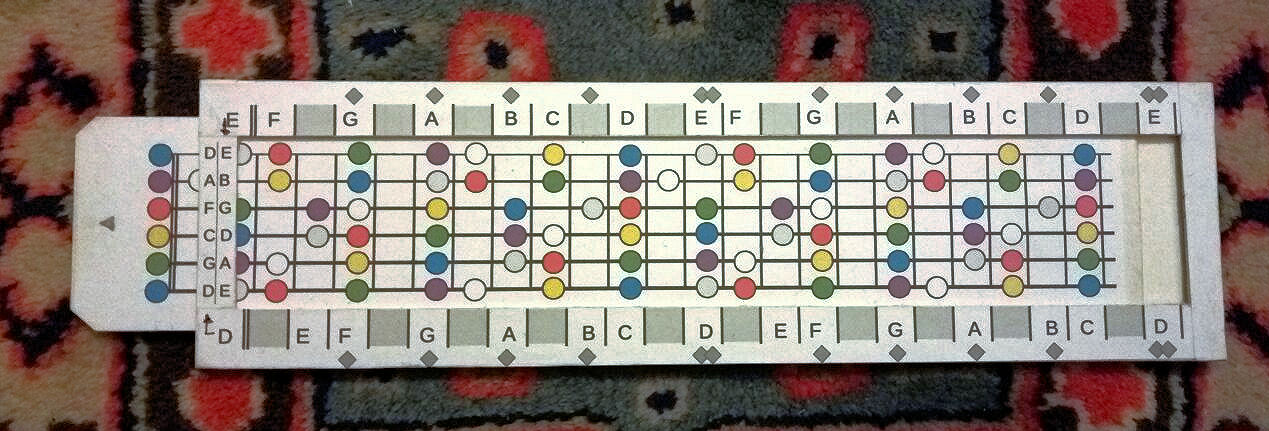Pattern Training For Diatonic Modes On The Guitar

You remember slide rules? This one I made to help learning finger patterns on the guitar, for whatever diatonic scale and mode I choose. I just need to slide the rule out to match a mode root dot to a desired note name, using top or bottom scale. Top scale gives the note names for a standard tuning in E, bottom scale for lower tuning in D, which I use a lot.
The coloured dots represent the root notes of the pentatonic scale modes, so playing them is always harmonious. The white and the grey dots represent the root notes for the Lydian and the Locrian mode.
Colour-code for the modal root notes
(ordered from brighter to darker modes):
- White = Lydian
- Red = Major or Ionian
- Yellow = Mixolydian
- Green = Dorian
- Blue = Minor or Aeolian
- Violet = Phrygian
- Grey = Locrian
So, for instance, in the image above for a guitar tuned standard in E, the violet dot on the top E string is at note A (on the top scale above). This means the slide rule is set to show the patterns for A Phrygian, with the root note (tonic) set to A. Likewise it shows them for F Major / Ionian (red dot), G Dorian (green dot), C Mixolydian (yellow dot), D Aeolian / natural Minor (blue dot), etc. One could also just read the notes used in any mode from the scale. For the A Phrygian these would be: A - Bb - C - D - E - F -G - A.
For a guitar tuned a whole tone lower to a D tuning one uses the bottom scale and the low E string, which is now a D string. So, in the example, we get the slide set to G Phrygian, or Eb Major etc.
On the concept of brighter and darker modes, please see this webpage by Anton Schwartz: https://antonjazz.com/2012/11/brightness-darkness/